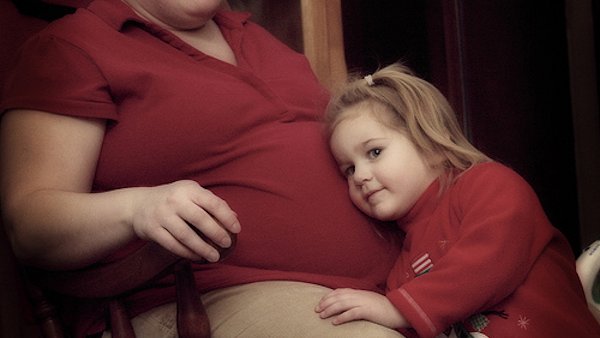|
|
Fetal Timeline Maternal Timeline News News Archive Aug 21, 2015

Education level pre-pregnancy can be transmitted from mothers to daughters across at least three generations. This transmission appears to be seen in low birth weight in those generations.
|
|
| |
|
|
|
Pre-pregnancy factors affect two generations
A woman’s weight at birth, education level and marital status pre-pregnancy can have repercussions for two generations, putting her children and grandchildren at higher risk of low birth weight.
A woman’s weight at birth, education level and marital status pre-pregnancy can have repercussions for two generations, putting her children and grandchildren at high risk for low birth weight. The study was conducted by Jennifer B. Kane, assistant professor of sociology at the University of California, Irvine. Her findings are the first to tie social and biological factors together using population data in determining causes for low birth weight.
“We know that low-birth-weight babies are more susceptible to later physical and cognitive difficulties and that these difficulties can sharpen the social divide in the U.S. But knowing more about what causes low birth weight can help alleviate the intergenerational perpetuation of social inequality through poor infant health.”
Jennifer B. Kane, postdoctoral scholar during research, The University of North Carolina at Chapel Hill, now Assistant Professor, UCI.
Published in the Journal of Health and Social Behavior, the study is based on both the (1) National Longitudinal Survey of Youth 1979 and the (2) Children of the National Longitudinal Survey of Youth 1979. The former study yielded birth weights and pre-pregnancy physical and social health data on female respondents as well as social data on their mothers, while the latter study captured this data on the previous survey participants’ daughters. In total, Kane looked at 1,580 mother-daughter pairs, focusing on their weight at birth, marital status and education level.
Kane: “The odds of having a low-birth-weight baby were one and a half to two times greater for mothers who themselves were born low birth weight compared to mothers who were not born low birth weight. But also important are social factors, including education and marital status. And knowing that biological factors perpetuate the cycle – being a low-birth-weight baby makes a woman more susceptible to delivering the same – we start to see that we can’t look at these two factors separately. This really makes a difference in how we think about planning future population-level policies or programs that intend to reduce social inequalities in birth weight.”
Education level pre-pregnancy can be transmitted from mothers to daughters across at least three generations, and this intergenerational transmission appears to affect birth weight of future generations.
This means that causes of low birth weight extend much further back in time than what is typically focused on — pregnancy.
Kane’s work shows that key factors can be traced beyond mother’s own early life experiences, to factors dating back multiple generations.
Abstract
Social inequalities in birthweight are an important population health concern as low birthweight is one mechanism through which inequalities are reproduced across generations. Yet, we do not understand what causes these social inequalities. This study draws together theoretic and empiric findings from disparate disciplines—sociology, economics, public health, and behavior genetics—to develop a new integrative intra- and intergenerational model of preconception processes influencing birthweight. This model is empirically tested using structural equation modeling and population-level data containing linked mother-daughter pairs from the National Longitudinal Survey of Youth (NLSY79) and the Children of the NLSY79 (N = 1,580 mother-daughter pairs). Results reveal that birthweight is shaped by preconception factors dating back to women’s early life environment as well as conditions dating back three generations, via integrative intra- and intergenerational processes. These processes reveal specific pathways through which social inequality can transmit from mothers to children via birthweight.
Funding for this study was provided by the Eunice Kennedy Shriver National Institute of Child Health & Human Development.
About the University of California, Irvine: Currently celebrating its 50th anniversary, UCI is the youngest member of the prestigious Association of American Universities. The campus has produced three Nobel laureates and is known for its academic achievement, premier research, innovation and anteater mascot. Led by Chancellor Howard Gillman, UCI has more than 30,000 students and offers 192 degree programs. It’s located in one of the world’s safest and most economically vibrant communities and is Orange County’s second-largest employer, contributing $4.8 billion annually to the local economy. For more on UCI, visit www.uci.edu.
Media access: Radio programs/stations may, for a fee, use an on-campus ISDN line to interview UC Irvine faculty and experts, subject to availability and university approval. For more UC Irvine news, visit news.uci.edu. Additional resources for journalists may be found at communications.uci.edu/for-journalists.
About The University of North Carolina at Chapel Hill: The nation’s first public university, The University of North Carolina at Chapel Hill is a global higher education leader known for innovative teaching, research and public service. A member of the prestigious Association of American Universities, it regularly ranks as the best value for academic quality in U.S. public higher education. Now in its third century, the university offers 78 bachelor’s, 112 master’s, 68 doctoral and seven professional degree programs through 14 schools and the College of Arts & Sciences. Every day, faculty, staff and students shape their teaching, research and public service to meet North Carolina’s most pressing needs in all 100 counties. The university’s more than 304,000 alumni live in all 50 states and 150 countries, and over 159,000 live in North Carolina.
Return to top of page
|



